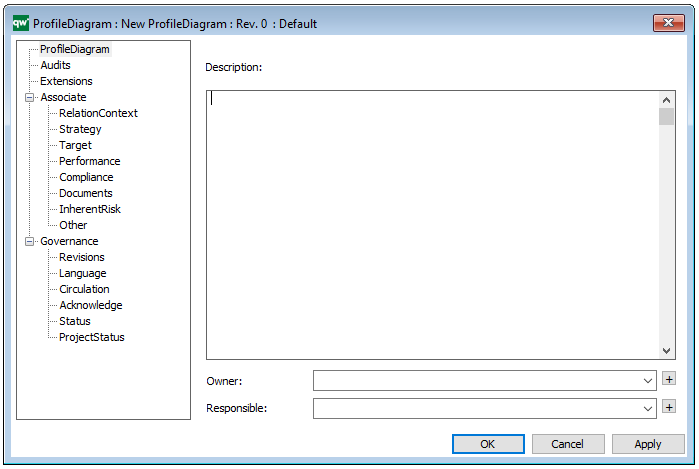Purpose: The purpose of the Profile Diagram is to operate at the metamodel level to show stereotypes as classes, and profiles as packages.
Core concerns: The Profile Diagram enables you to model Profiles, Stereotypes, Classes, Interfaces, Enumerations, and Annotations. These elements can be connected by Generalizations, Associations, Profile Applications, Package Imports, Element Imports or Containments.
Below, you can see an example of a Profile Diagram for Service Data for a message:

Relation to other templates: The Profile Diagram is part of the UML templates QualiWare supports along with the Activity Diagram, Communication Diagram, Deployment Diagram, Class Diagram, Composite Structure Diagram, State Diagram, Package Diagram, Component Diagram, Sequence Diagram, Use case diagram, Timing Diagram, Composite structure Diagram, Object Diagram and Interaction overview diagram
Properties and metadata: The Profile Diagram template can for example retain the following information:
- A description of the diagram
- Link to the owner of the diagram
- Link to the one responsible for the diagram
- Extensions (Stereo types, Constraints and Tagged values)
- Audits (auto generated information regarding its current state and access rights)
- Associated documents, diagrams and other objects
- Inherent Risk detailing risk considerations
- Governance information detailing information about the published diagram and who has been involved in the approval of the diagram

The above picture shows the properties dialogue window for the Profile Diagram template where you can view and edit the diagram’s properties in QualiWare Lifecycle Manager.
For more information: about the UML, please visit the Object Management Group’s Website, where you can find the complete specification. Information about the Profile Diagram can be found in version 2.2